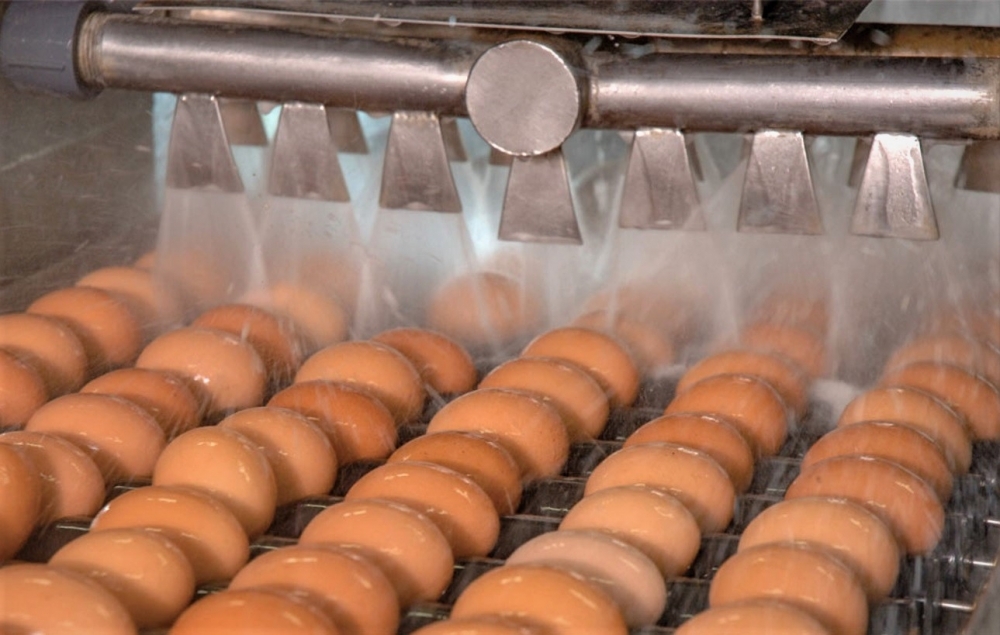

Made of chitosan, a natural polymer obtained from shellfish exoskeletons, the coating enhances mechanical strength, protects against microorganisms, and prevents mass loss due to evaporation. It can also be used to coat food packaging (photo: Luiz Fernando Gorup / UFGD)
Made of chitosan, a natural polymer obtained from shellfish exoskeletons, the coating enhances mechanical strength, protects against microorganisms, and prevents mass loss due to evaporation. It can also be used to coat food packaging.
Made of chitosan, a natural polymer obtained from shellfish exoskeletons, the coating enhances mechanical strength, protects against microorganisms, and prevents mass loss due to evaporation. It can also be used to coat food packaging.

Made of chitosan, a natural polymer obtained from shellfish exoskeletons, the coating enhances mechanical strength, protects against microorganisms, and prevents mass loss due to evaporation. It can also be used to coat food packaging (photo: Luiz Fernando Gorup / UFGD)
By Elton Alisson | Agência FAPESP – A biofilm that extends the shelf life of eggs has been developed by researchers at the Center for Research and Development of Functional Materials (CDMF), one of the Research, Innovation and Dissemination Centers (RIDCs) supported by FAPESP. CDMF is hosted by the Federal University of São Carlos (UFSCar) in the state of São Paulo, Brazil. Scientists at the Federal University of Grande Dourados (UFGD) in the state of Mato Grosso do Sul collaborated.
The material is basically made of chitosan, a natural polymer obtained from the hard outer skeletons of shellfish, including shrimps, lobsters and crabs. In addition to protecting eggs, it can also be used as a coating for many kinds of food packaging, increasing their mechanical strength and shielding them from microorganisms.
“Besides its ability to enhance mechanical strength and its antifungal and antibacterial properties, the biofilm seals microfissures and pores on the egg’s surface. All this extends the product’s shelf life,” Luiz Fernando Gorup, coprincipal investigator for the project with Eduardo José de Arruda, told Agência FAPESP. Gorup is a visiting professor and Arruda is a member of the faculty at UFGD.
The biofilm prolongs the durability of eggs from 30 days to 50 or even 60 days, depending on storage conditions, according to Arruda.
A patent application for the material has been filed with the National Industrial Property Institute (INPI).
The material combines chitosan and quaternary ammonium salts of all commercially available generations. Quaternary ammonium compounds (“quats”) are widely used as disinfectants and kitchen sanitizers because of their antimicrobial properties. Combining them with chitosan at the right concentration results in a polymer in which the quats are uniformly dispersed or contained within the structure of the material.
“These polymeric mixtures can be used in solutions, emulsions, gels and dispersions or contained in other matrices or natural or synthetic supports,” Gorup explained.
For example, the material can be sprayed onto eggs in the poultry farm chicken house or added to the disinfection bath in the hygienization stage.
Water evaporates quickly from the polymeric mixture, which soon dries and returns to its initial polymeric state with quats interwoven into its structure. The material settles as a biofilm resembling a flexible varnish.
The biofilm prevents colonization of the egg surface by fungi and bacteria and stops microorganisms from penetrating the shell via microfissures or pores. It also retains moisture, controls gases, prevents the loss of egg mass due to evaporation, and protects eggs throughout the supply chain from farm to retail outlet.
“Our lab tests showed that mass loss in eggs protected by the biofilm is 40% less than that in unprotected eggs,” Gorup said.
Commercialization plans
The researchers envisage commercialization of the new material for application in chicken houses by spraying, in disinfectant baths, after the egg polishing stage and before sorting by size. Eggs can be treated with the biofilm using a conventional sprayer as they travel along the conveyor belt toward the packaging station.
“We want to work with producers to develop a solution with the ideal concentration for application by means of a simple process, in order not to affect the finances of the commercial egg production chain. Eggs should remain cheap,” Gorup said.
In the researchers’ opinion, the quat-based disinfectants currently used to spray incubatable eggs are not entirely effective against Salmonella and other organisms. For example, once the quats dry, they easily rub off during transport.
“There’s no such risk with our biopolymer because the particles of the compound are evenly dispersed on the surface,” Gorup said.
Novel solutions
The researchers are now developing polymeric mixtures of novel bioactive compounds for use in protective coatings not only for eggs but also for fruits and vegetables. The goal is to contribute to the production of “smart” food packaging.
The advantages of the compounds under development compared with natural polymers like chitosan, chitin, alginate and pectin include a better cost-benefit ratio and greater safety for consumers and the environment.
The novel compounds could be used as a complement to polymeric coatings and even in special applications for various products and food packaging materials. They would be less toxic than the conventional sanitizers now used to disinfect fruits and vegetables. They could also be used more generally to produce plastic films and other types of coatings for packaging and surfaces, Gorup explained.
“We believe the polymer based on this compound has significant potential for use in bioprotective film for fruits and vegetables and even food packaging,” he said.
Republish
The Agency FAPESP licenses news via Creative Commons (CC-BY-NC-ND) so that they can be republished free of charge and in a simple way by other digital or printed vehicles. Agência FAPESP must be credited as the source of the content being republished and the name of the reporter (if any) must be attributed. Using the HMTL button below allows compliance with these rules, detailed in Digital Republishing Policy FAPESP.





